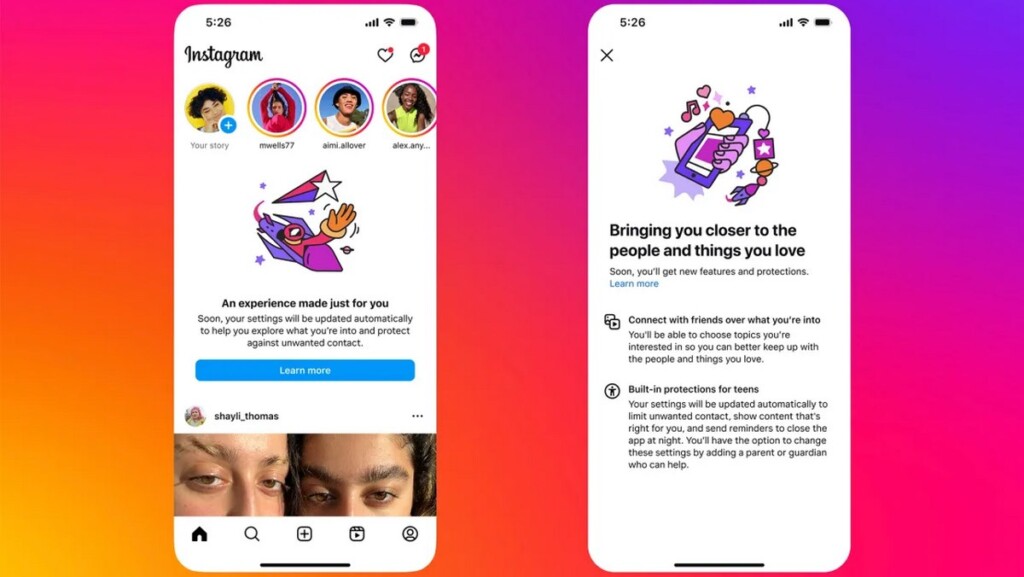Concerns over the well-being of teenage users of Instagram have led to its parent company Meta creating the most insulated form of the app seen so far: the Teen account.
All accounts registered with teenage users (up to age 15) have automatically been changed to the teen mode, which applies many of the more than 30 parental supervision and underage safety features that Meta has added to the app in the last 2 years.
The new teen accounts feature the strongest degree of moderation of sensitive content, while users can only be messaged by accounts they already follow, and the app will automatically stop sending push notifications after 10:00 p.m.
The accounts are private by default and there are “nudges” from the app to encourage teens to stop using it after 1 hour of use time in a day.
“With parents, we know from speaking to them, three of their top concerns with teens’ online safety are who can contact them, the content that they’re seeing, and time spent,” said Kira Wong-O’Connor, Meta Youth Safety Policy Manager.
Any adjustments to these restrictions require the permission of a parent or supervisor which the teen account has to connect with. Once connected, parents can monitor their teen’s social media usage, set app-use time limits, see who has recently messaged their children, and approve or deny certain alterations to the content moderation settings.
Social media use among teens, particularly teen girls, has been suggested to be a strong driver of the rapid increase in mental health disorders among young people in the United States.
Anyone who has followed famous television psychologist Dr. Phil Mcgraw’s post-television career will know he is very passionate about this topic. If Dr. Phil isn’t your cup of tea, best-selling author and professor at NYU Jonathan Haidt has the same thing to say.
TEENS ARE SMARTER THAN WE THINK: More Teens Than You Think Understand the Positive and Negative Aspects of Smartphones–Survey
Meta founder and CEO Mark Zuckerburg has been grilled in front of Senate subcommittee hearings on this topic, where he was accused of ignoring warnings for years about harm to teens on his platforms.
Going over exactly how the new restrictions are set in place, one quickly realizes that lying will still allow teens with unobservant parents to circumvent these restrictions, as Meta doesn’t conduct ID checks outright.
MORE GOOD NEWS ON THIS TOPIC: Big Tech Companies Sign Pact to Fight AI-Generated Election Misinformation in Unprecedented Year
There’s nothing stopping a teen from asking a friend to create an account with a date of birth decades older than them and setting this fraudulent account as their parent in order to deactivate the teen account mode. Confronted with this fact, Wong-O’Connor told CNN that any changes to existing accounts that fall within the teen and parent age ranges will require an ID check.
Additionally, anyone looking to register as the parent of a teen account will have to fall within a certain expected age range, meaning no post-hoc alterations to existing accounts can succeed in pulling the wool over Meta’s eyes.
Sure, teens and their friends can simply collaborate to create a fake email address to register a fake Instagram account, but at a certain point, parents should be expected to monitor or involve themselves a little in their teen’s device usage. Blaming Meta for utter parental negligence is much like the pot calling the kettle black.
SHARE This News With Anyone You Know Concerned About Their Teens Social Media Usage…
The post On Advice of Psychologists, Instagram Just Moved Every Teen into Protective User Accounts appeared first on World Online.

